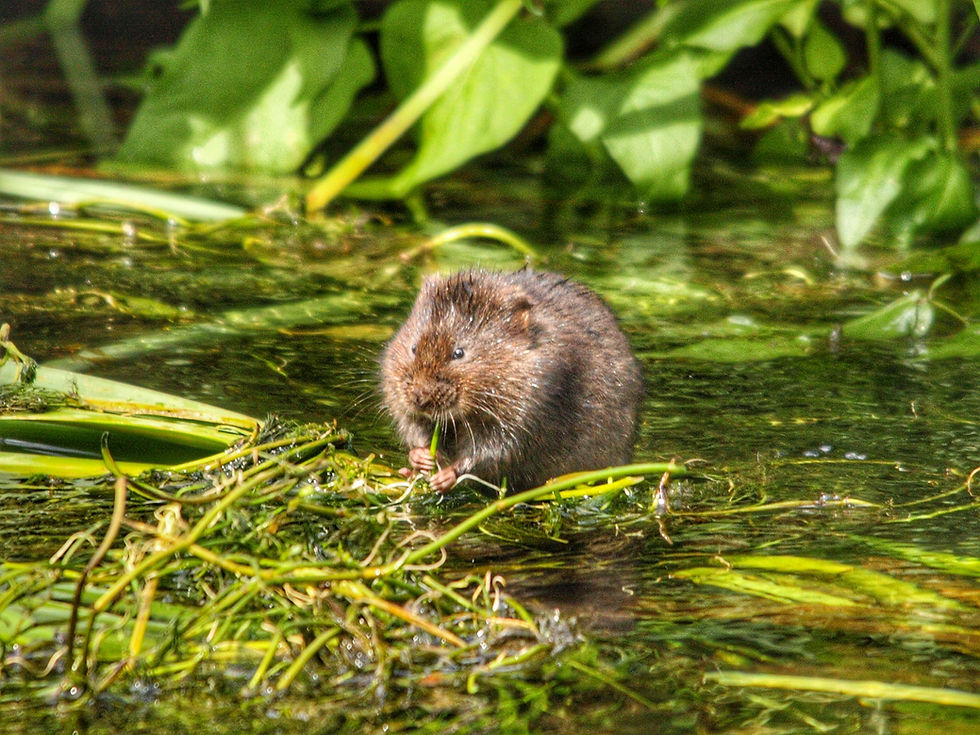Wildlife Watch with Jerry
- Broads Society

- Apr 28
- 3 min read
Updated: May 10
St Mark's Flies and Little Gulls
Jerry Simpson

Towards the end of April many people notice and comment on a type of shiny black fly which drifts slowly over low vegetation with legs dangling down causing some holidaymakers in the broads to fear a mass invasion of mosquitos has occurred. The bodies and legs are very shiny, black coloured and in the case of males are about 12mm long whilst the females are slightly larger at 14mm. They sometimes emerge in great numbers around woodland edges, fields and wetlands causing what appear to be swarms. These are St. Mark’s flies ( Bibio marci ) which are so called because they usually emerge around about the 25th April which, as I’m sure you already knew, is St Mark’s Day. They are also called Hawthorn flies and can look a bit intimidating but rest assured that they do not sting or bite humans and are great pollinators for fruit trees and other plants. They breed in soil and rotting vegetation so you can imagine how the wet Broadland habitat is perfect for them. They are a good source of food for arriving members of the swallow and warbler families but are usually only on the wing for about a week.

On the 7th April I was pleased to see a Little Gull ( Hydrocoloeus minutus ) on Barton broad flying around with the Black Headed gulls. Little Gulls are delicate, dainty birds and are passage migrants in the UK moving across the country in both spring (during mid April to mid May) and in autumn (late September to November). They are usually recorded in Norfolk in higher numbers in the autumn when they gather in favourite spots and flocks of several hundred birds can be seen. Having missed seeing them locally in the last two springs I was pleased to add it to my annual walking from home list for this year.
Little gulls, as the name suggests, are our smallest gull species and are in fact the
smallest gull in the world and are a delightful bird to watch as they gracefully fly around picking up insects from the surface of the water much like a tern. They are easily recognised at this time of year as they have dark charcoal underwings which stand out when they twist and turn in flight and the adults have black heads and a small red bill and red legs. Sometimes the adults in full breeding finery may show a flush of pink on the chest. Juveniles and first winter birds have a black 'W' shape across their upper wings which is quite distinctive when they are flying. They have previously tried to breed in Norfolk, most notably locally at Hickling in 1978, according to Birds of Norfolk, when a pair built a nest and laid 3 eggs but these failed to hatch and were probably predated. The usual breeding area is Finland, northern Russia and the former Baltic states whereas their wintering area is offshore as far south as the Mediterranean and North Africa with several hundred now
wintering off the coast of Britain and Ireland. Look out for them on the broads as they pass through on migration.
Jerry Simpson is a Broads Society member who lives in Neatishead, within walking distance
of both Barton and Alderfen broads. He is a site-specific volunteer for the Broads Authority,
with responsibility for the Barton boardwalk, and is Chair of the Broadland local group of the
Norfolk Wildlife Trust.





Comments